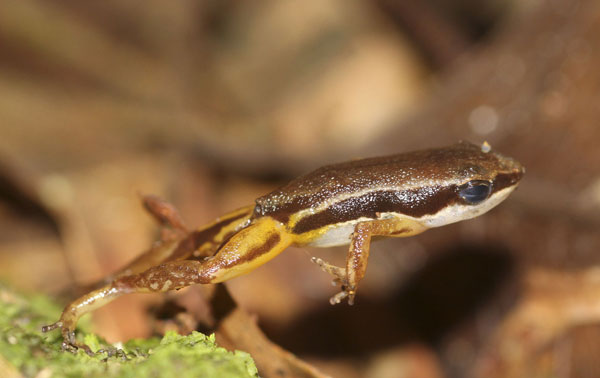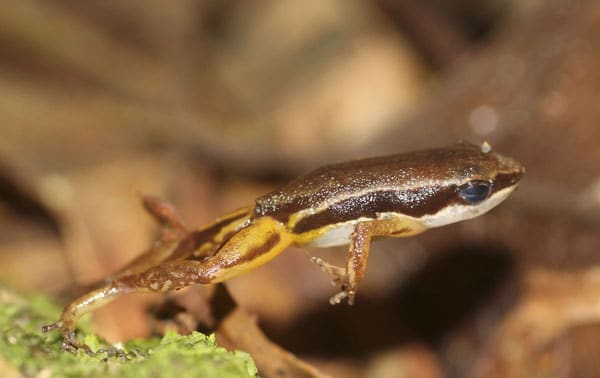Study says frogs that survive exposure to chytrid build resistance to the fungus.
We all know that the chytrid fungus has devastated amphibian populations around the world and the fungus spreads fairly rapidly. Scientists have been looking for clues in efforts to defeat it and may have come across a potential solution; exposing frogs to dead fungus to build their resistance to live fungus. A recent report published in the journal Naturereveal points out that frogs and other amphibians can acquire behavioral or immunological resistance to the chytrid fungus that helps them to survive the fungus.
Read More
Chytrid Fungus Does Not Do Well In Salty Bodies Of Water
Death Of Frogs From Chytrid Fungus Is The Same In The Wild As In The Lab
Australia's Armoured Mist Frog Changes Living Arrangements And Survives With Chytrid
"Acquired resistance is important because it is the basis of vaccination campaigns based on 'herd immunity,' where immunization of a subset of individuals protects all from a pathogen," Jason Rohr, a biologist at the University of South Florida (USF) said in a statement released by the National Science Foundation. Rohr, along with Taegan McMahon of the University of Tampa led the research team that made the discovery.

Brian Gratwicke/wikipedia
Rainforest rocket frog (Colostethus flotator) jumping.
According to the National Science Foundation, the researchers exposed frogs to the chytrid fungus and after just a single exposure, the frogs learned to avoid the fungus. In cases where the frogs could not avoid exposure to the fungus, the immune response of the amphibians improved with each successive exposure and infection clearance, which the scientists say reduced the fungal growth in the frogs. This reduction in fungal growth leads the scientists to believe that the frogs would survive future chytrid infections.
Amphibian exposure to the dead chytrid fungus helped the frogs to generate an acquired resistance that was the same as if the fungus where living, and this suggests that the exposure of captive bred amphibians to the dead chytrid or dead chytrid antigens may be a solution to protect those amphibians in the wild that are chytrid-naive or have not had to deal with the fungus yet. This may also help scientists to reintroduce captive-bred amphibians to areas in which the fungus persists.
John B. Virata keeps a ball python, two corn snakes, a king snake, and two leopard geckos. His first snake, a California kingsnake, was purchased at the Pet Place in Westminster, CA for $5. Follow him on Twitter @johnvirata



